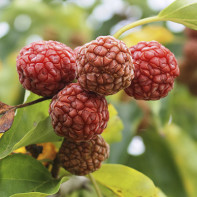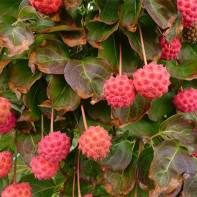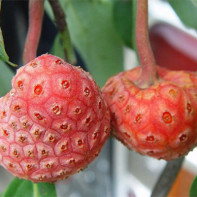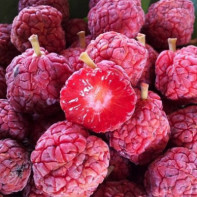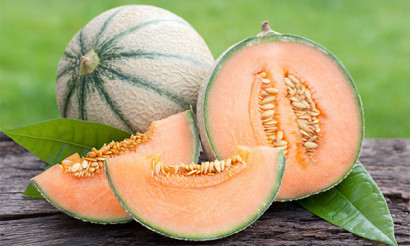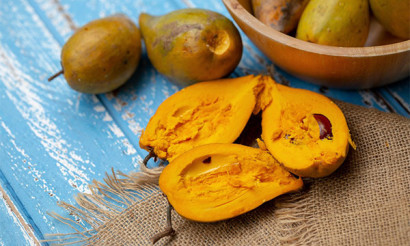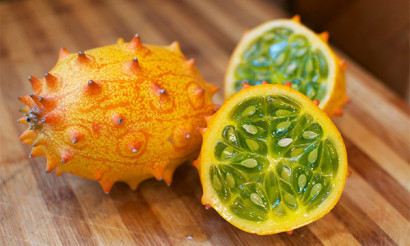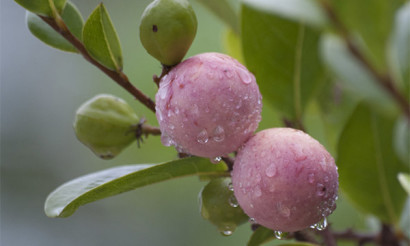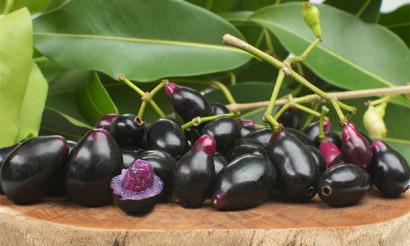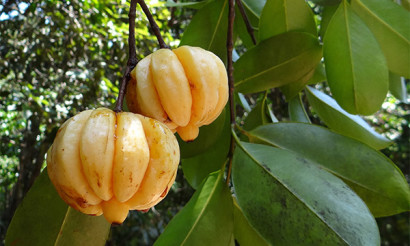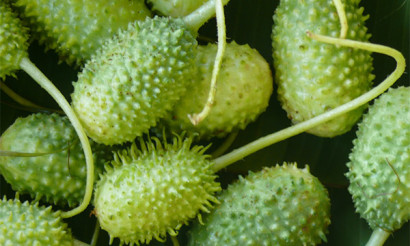Strawberry tree: what kind of fruit
The strawberry tree belongs to the vast Mulberry family. The botanical name of the plant is Triostrica Currania (in Latin - Cudrania tricuspidata). In the countries of Southeast Asia, this species is called kudang, mandarin-melon berry (mandarin melon berry), Chinese mulberry (which should not be confused with real mulberry), pinpin tree.
- What is this fruit
- What does it look like
- Where grows
- What is useful strawberry tree fruit
- Which may be harmful
- How to eat strawberry fruit
- What can be cooked from it
- Jam
- Curd Paste
- Milk shake
- Jelly
- Compote
- Panacota
- Application in traditional medicine
- Application in cosmetology
- How to grow a strawberry tree
- Interesting Facts
What is this fruit
Codrania fruits are a large multi-stems, similar in structure to raspberries. In autumn, during the ripening period, abundant clusters of red fruits cover the tree. The diameter of round fruits is 2.5–5 cm.

Inside the juicy fruit, covered with delicate skin, small brown seeds are hidden. The taste of the pulp is pleasant and sweet, it does not contain sourness and is a bit like persimmon and watermelon. Strawberry tree fruits and leaves contain flowing white juice. If the fruit is broken, a pleasant watermelon aroma will appear.
What does it look like
Strawberry tree is a tall and sprawling plant, which reaches 6 m in height. Young trees are covered with sharp, long spikes that disappear over time. Curls are dioecious species; this representative of mulberry trees has female and male trees. Interestingly, female plants are taller and more powerful than male ones.
Curls - deciduous tree. Every fall, in November, it loses its lush crown. The leaves of the strawberry tree are elongated and pointed. Already in the middle of summer, yellowness appears on green leaves.
The tree blooms in May or early June. Inflorescences grow in deciduous sinuses, they can be paired or single. The diameter of male flowers reaches 5 mm, female flowers are smaller, their size does not exceed 1–1.5 mm. The petals are white or yellowish white. Pollination occurs when light pollen is carried by the wind. On the male trees, several female flowers can grow, which are also pollinated and bear fruit. Harvested when the foliage turns yellow and begins to fall. By this time, the fruits will pour juice and acquire a rich raspberry and crimson red color.
Where grows
The homeland of the strawberry tree is the tropical and subtropical regions of Southeast Asia. This plant loves sunlight, warmth and moderate humidity. Wild-growing curls are found in Iran and Afghanistan, in areas with fertile soils. Strawberry trees are cultivated in China, southern Japan, Vietnam, and even Nepal. In regions close to the equator, the fruit grows and bears fruit even at an altitude of 2200 meters above sea level.
Amateur lovers of Transcaucasia and the south of Ukraine bred Kudrania. So, a tree successfully bears fruit in Odessa, on the territory of V.P. Filatova, this plant is in Batumi, in the botanical garden. Strawberry tree is grown in the subtropics of the Russian Federation.
Strawberry tree got to the countries of the Old World relatively recently. Seedlings were brought to England and other European countries only in 1872. In the United States, frizz appeared in 1930.
What is useful strawberry tree fruit
The fruit of the strawberry tree is a valuable nutritious fruit that saturates the body with useful substances and diversifies the menu. 100 g of fresh product contains:
- vegetable proteins - 0.8 g;
- carbohydrates - 4.8–5.1 g;
- fats - 0.08–1.0 g;
- fiber - 2.3 g;
- ash substances - 1.1 g;
- water - 83–85 g.
In 100 g of ripe fruits, only 23 kcal. The energy value of the same volume of the product is 96.232 kJ.
The fruits of the strawberry tree are a source of valuable organic compounds. The fruit contains linoleic, cysteic, myristic acids, arginine, isoleucine, phenylalanine.
The amount of mono- and disaccharides in 100 g of ripe fruit reaches 2.7 g. Coudrania contains several types of vitamins - B1 (thiamine), B2 (riboflavin), B6 (pyridoxine) and B9 (folic acid). The fruits contain ascorbic acid, tocopherol, pigment carotene, pectin, vitamin P (rutin) and glycosides.
The pulp contains important trace elements - potassium, phosphorus, magnesium and calcium. A small amount of iron is present, cobalt, fluorine, chromium and manganese are found.
The rich mineral and vitamin composition determine the benefits of this exotic fruit:
- The fruits of frizz help to cope with vitamin deficiency, increase immunity, accelerate the recovery of the body after illness.
- Organic acids present in the product ensure the normal condition of the skin and hair, enhance metabolic processes and are involved in many complex chemical reactions.
- The product contains sugar, which quickly restores energy loss. Therefore, the fetus is useful to athletes, children, people involved in heavy physical labor.
- The fruit does not cause heartburn and burping, since the total amount of acids contained in the pulp is small.
- Fruits contain iron, the product can be included in the menu for anemia.
- The high content of water and plant fibers activates metabolic processes, helps cleanse the body of toxins and toxins.
- Curls are easily digested and absorbed by the body, does not cause a feeling of pressure and fullness in the stomach.
Which may be harmful
The fruit has a high glycemic index. Diabetic patients should completely exclude this product from the diet.
Coudrania should not be eaten if there is an allergic reaction in the form of rash, itching, urticaria and edema. Intolerance to the product is indicated by nausea and indigestion.
The body of young children reacts differently to new foods. Do not feed this fruit to children under the age of 2-3 years.
With a tendency to gastritis, the product is used with caution. If a person is diagnosed with any disease of the gastrointestinal tract, it is worth sticking to the recommended diet, and coordinate all dietary changes with your doctor.
How to eat strawberry fruit
Coudrania is better to eat fresh, immediately after harvesting. The fruits are washed in cool running water and served on the table. Fruit is eaten for dessert, at any time of the day. The amount of product for a single dose is not limited and depends on the gastronomic preferences of a particular person. But one limitation still exists. Nutritionists do not recommend eating the fruits of a strawberry tree on an empty stomach, since the rapid production of gastric juice can lead to unpleasant sensations.
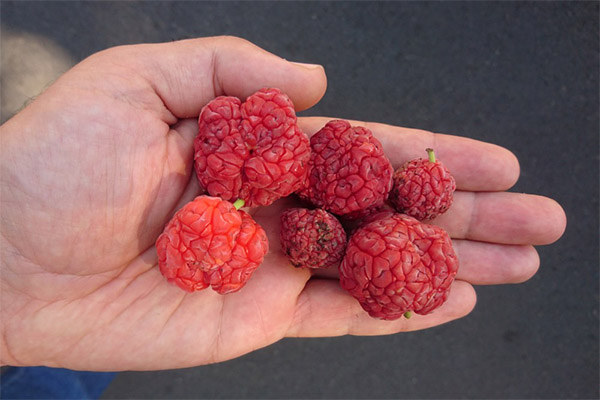
It is advisable to eat fresh curls on the day of purchase or removal from the tree. This product is not subject to storage. The very next day, the fruits wither, give juice and begin to ferment. You can keep the product in the refrigerator for 2-3 days, but its quality will decline every hour. The fruits of the strawberry tree are eaten not only fresh, but also in frozen, canned and dried form.
What can be cooked from it
Compote, jams, jelly, fruit drinks are made from fresh frizz. The fruit is combined with puff and shortcrust pastry, cottage cheese, starch, milk, eggs and other products.
Jam
In a pan, put 1 kg of strawberry tree fruits and fill them with sugar (0.5 kg). The ingredients are mixed and left for 2.5-3 hours, so that the curls give juice. The pan is placed on the stove and brought to a boil. Then remove the dishes from the stove and leave until completely cooled.The jam is transferred to small sterilized jars and left in the house for 2-3 days. Billets are stored in a cold cellar, or in the refrigerator.
Curd Paste
2 packs of low-fat cottage cheese (400 g) and 50 g of strawberry tree fruits are ground to a homogeneous mass. A spoonful of softened cow butter and a third glass of powdered sugar are added. The ingredients are mixed first with a spoon, then whipped with a mixer. It turns out a lush and delicious dessert.
Milk shake
A large creamy ice cream (250 g), ripe fruits (80 g), a glass of cold milk and a pinch of crystalline vanilla are placed in a deep bowl and whipped with a blender. The cocktail is poured into portioned glasses and decorated with berries.
Jelly
In 100 ml of warm boiled water, a tablespoon of gelatin is diluted. 300 g of ripe fruits are put in the pan. Add the dissolved gelatin and put the pan on the stove. Jelly is cooked for 20–25 minutes with constant stirring. Hot liquid is poured into molds and left to solidify, first on the table, then in the refrigerator.
Compote
To prepare the drink, you need 2-3 apples, 6-7 plums and a glass of strawberry tree fruits. In a large pan, boil water, put fruit and a few tablespoons of sugar in it (to taste). Stewed fruit until the fruit is ready.
Panacota
For cooking you will need:
- icing sugar (300 g);
- agar-agar (40 g);
- corn starch (120 g);
- cream (1 l).
Powdered sugar, agar-agar, starch are mixed, ground in a cup and cream is added. The mixture is boiled for 5 minutes over low heat, with constant stirring. Then the liquid is poured into molds and put them in the refrigerator. After hardening, the panacotta is removed, laid out on plates and decorated with fruit slices.
Application in traditional medicine
For medicinal purposes, dried fruits, bark and sapwood of a tree are used. From plant materials make infusions, decoctions, oil emulsions and powder.
Tea from dried fruits is used for stomach ulcers and duodenal ulcers (in addition to drug treatment). A decoction of dried fruits will help increase the iron content in the blood. Fresh fruits are also suitable for this purpose. Traditional healers are advised to drink an infusion of fruits for hypertension.
Infusions and decoctions made from bark have antiseptic properties. They can wash poorly healing wounds, do soothing compresses on inflamed, irritated skin.
Healers in Asian countries use decoctions from bark and sapwood to treat attacks of malaria, stop heavy menstrual bleeding, and get rid of angina attacks. Infusions from the root are used to treat amenorrhea and enhance lactation. Shredded bark is used as a remedy for burns and skin ulcers.
Application in cosmetology
From milled bark make a remedy for teenage acne. Finely grated bark is poured with any vegetable oil and once a day lubricate the skin of the face.
Coudrania can be added to any homemade nourishing mask. The crushed berries are mixed with mango, pulp of watermelon and melon. This mixture soothes and softens irritated, flaky skin.
How to grow a strawberry tree
In open ground, friars are grown by seeds, root layers and cuttings. For home breeding, all 3 methods are suitable.

The cuttings are cut from an annual shoot, treated with a root stimulator and planted in a pot with a mixture of vermiculite and coarse sand. After 3-4 months, the seedling will release the roots, and it, together with the soil, is transferred to a large container.
For planting a house, a mixture of garden soil, humus, peat and sand is prepared in a ratio of 1: 1: 1: 1. You can take more humus and reduce the amount of peat. At the bottom of the pot, several holes are made and drainage is made of broken brick.
The tree should be on the sunny side, in summer the pot can be rearranged onto a balcony or a bright veranda. From young shoots, a crown is formed, otherwise the plant will greatly stretch in length. The strawberry tree does not like excess water, but it can easily survive a small drought.Another watering is done when the soil dries by 2-3 cm.
In the winter months, the tree enters a dormant period. In October, the pot is rearranged in a cool room or on a closed loggia. In November, a home plant, like a garden tree, will drop leaves. In winter, it is enough to water the soil once every 2 weeks. After 2 years, the curls are transplanted into a larger container, changing the soil.
Interesting Facts
- Curls has a powerful and branched root system. Farmers of the southern countries plant this plant on unstable soils and slopes to fix the soil layer. Young shoots of curls are used for growing hedges.
- Strawberry tree leaves are an alternative food for silkworms. They are fed to larvae if the mulberry leaves run out.
- Tree branches - raw materials for organic yellow paint. Strawberry tree bark is used for making paper.
- Wood curls have a beautiful structure. This lightweight, durable material is the raw material for the manufacture of souvenirs, musical instruments and expensive furniture.
«Important: all information on the site is provided exclusively in fact-finding purposes. Before applying any recommendations, consult with a profile specialist. Neither the editors nor the authors are liable for any possible harm caused materials. "

